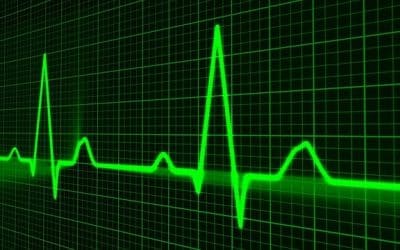Chronic Pseudomonas aeruginosa lung infection is the most severe complication in cystic fibrosis patients. It is characterised by antibiotic-tolerant biofilms in the endobronchial mucus with zones of oxygen (O2) depletion mainly due to polymorphonuclear leucocyte activity. Whilst the exact mechanisms affecting antibiotic effectiveness on biofilms remain unclear, accumulating evidence suggests that the efficacy of several bactericidal antibiotics such as ciprofloxacin is enhanced by stimulation of the aerobic respiration of pathogens, and that lack of O2 increases their tolerance. Reoxygenation of O2-depleted biofilms may thus improve susceptibility to ciprofloxacin possibly by restoring aerobic respiration.
Inflammatory Bowel Disease
Explore the latest research on the use of Hyperbaric Oxygen Therapy (HBOT) to treat Inflammatory Bowel Disease. Extivita maintains an extensive publication database for Inflammatory Bowel Disease and various other indications with therapies such as Hyperbaric Oxygen Therapy, Neurofeedback, Nutritional IV Therapy, Infrared Sauna, and Pulsed Electromagnetic Field Therapy. Explore our database on Acne and Hyperbaric Oxygen Therapy aka, HBOT, below.
For a complete list of indications treated at Extivita, explore the conditions we treat.
Hyperbaric oxygen therapy for chronic antibiotic-refractory ischemic pouchitis.
Hyperbaric oxygen therapy (HBOT) has been shown to be efficacious in treating various conditions, including perianal Crohn’s disease. Here we present a case of a 59-year-old male with a history of ulcerative colitis, who underwent a total proctocolectomy and two-stage J-pouch construction. He later developed chronic antibiotic-refractory pouchitis with endoscopic features of ischemia. At the completion of HOBT-a total of 20 sessions of 100% oxygen at 2.5-3.0 atmospheres absolute for 60-90 minutes per session-a repeat pouchoscopy showed marked improvement of endoscopic mucosal inflammation. HBOT is known to increase tissue oxygenation, reduce tissue hypoxia, alter inflammatory pathways and promote tissue healing.
Hyperbaric oxygen therapy for chronic antibiotic-refractory ischemic pouchitis.
Hyperbaric oxygen therapy (HBOT) has been shown to be efficacious in treating various conditions, including perianal Crohn’s disease. Here we present a case of a 59-year-old male with a history of ulcerative colitis, who underwent a total proctocolectomy and two-stage J-pouch construction. He later developed chronic antibiotic-refractory pouchitis with endoscopic features of ischemia. At the completion of HOBT-a total of 20 sessions of 100% oxygen at 2.5-3.0 atmospheres absolute for 60-90 minutes per session-a repeat pouchoscopy showed marked improvement of endoscopic mucosal inflammation. HBOT is known to increase tissue oxygenation, reduce tissue hypoxia, alter inflammatory pathways and promote tissue healing.
Inflammatory Bowel Disease: An Overview of Immune Mechanisms and Biological Treatments
Abstract Inflammatory bowel diseases (IBD) are characterized by chronic inflammation of the intestinal tract associated with an imbalance of the intestinal microbiota. Crohn's disease (CD) and ulcerative colitis (UC) are the most widely known types of IBD and have...
Combining infliximab, anti-MAP and hyperbaric oxygen therapy for resistant fistulizing Crohn’s disease.
Fistulizing Crohn’s disease (CD) presents a therapeutic challenge as fistulae are notoriously difficult to heal. Mycobacterium avium ss paratuberculosis (MAP) treatment in CD is gaining attention. We evaluated healing of CD fistula(e) using a novel combination therapy. Nine consecutive patients who failed to heal fistulae on conventional treatment including anti-TNF, were treated with at least three doses of infliximab, 18-30 courses of hyperbaric oxygen therapy and anti-MAP antibiotics comprising rifabutin, clarithromycin and clofazimine. All patients achieved complete healing of fistulae by 6-28 weeks and follow-up for mean 18 months.
Hyperbaric oxygen for patients with chronic bowel dysfunction after pelvic radiotherapy (HOT2): a randomised, double-blind, sham-controlled phase 3 trial.
Abstract: Hyperbaric oxygen has been used as a therapy for patients experiencing chronic intestinal syndromes after pelvic radiotherapy for decades, yet the evidence to support the use of this therapy is based almost exclusively on non-randomised studies. We aimed to...
Enhanced colonic nitric oxide generation and nitric oxide synthase activity in ulcerative colitis and Crohn’s disease
Recent studies have suggested that nitric oxide (NO.), the product of nitric oxide synthase in inflammatory cells, may play a part in tissue injury and inflammation through its oxidative metabolism. In this study the colonic generation of oxides of nitrogen (NOx) and nitric oxide synthase activity was determined in ulcerative colitis and Crohn’s disease. Colonic biopsy specimens were obtained from inflammatory bowel disease patients and from normal controls. Mucosal explants were cultured in vitro for 24 hours and NOx generation was determined. Nitric oxide synthase activity was monitored by the conversion of [3H]-L-arginine to citrulline. Median NOx generation by inflamed colonic mucosa of patients with active ulcerative colitis and Crohn’s colitis was 4.2- and 8.1-fold respectively higher than that by normal human colonic mucosa. In ulcerative colitis and Crohn’s colitis nitric oxide synthase activity was 10.0- and 3.8-fold respectively higher than in normal subjects.
Effect of pulsed electromagnetic field treatment on programmed resolution of inflammation pathway markers in human cells in culture
Abstract Inflammation is a complex process involving distinct but overlapping biochemical and molecular events that are highly regulated. Pulsed electromagnetic field (PEMF) therapy is increasingly used to treat pain and edema associated with inflammation following...
Role of immunosuppressives in special situations: perianal disease and postoperative period.
Complex perianal disease is associated with poor outcome and requires early effective therapy. Corticosteroids are not effective in perianal fistulising Crohn’s disease, and antibiotics, immunosuppressants and anti-TNF therapy are required. It is important to consider combined medical surgical therapy after accurate imaging using an MRI scan of the pelvis. Drainage of any abscess at examination under anaesthesia and seton insertion are important before introduction of immunosuppressants and anti-TNF therapy. Long-term follow up of patients in a single centre reported responders to azathioprine having a reduced risk of perianal surgery (OR = 0.36; 95% CI: 0.27-0.46), but complex perianal fistulising Crohn’s disease generally requires combination therapy with anti-TNF and azathioprine.



